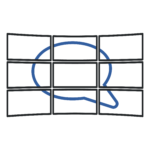HOW TO USE YOUR RECEPTION AREA to Educate, Engage and Inspire Patients
Don’t Just Educate. Inspire!
Reception area “info-tainment” is one of the most effective ways to educate patients about hearing health and your practice. If you have a television but are currently using it solely to entertain by playing the Travel Channel or Food Network, you are missing a great opportunity. Our company contracted Accent House Research to conduct a waiting room impact study. They found 93% of the doctors that participated indicated that their patients asked much more thoughtful questions after viewing digital signage or digital video in the waiting room. Because video/television engages several senses (hearing and vision), it is a great way to not only educate but also inspire patients. When you create your own video, you control the content and can tell your story. You can introduce your team and their passions in life. You can share patient testimonials as social proof that other lives have been improved because of care and the hearing health solutions you and your team provide. Finally, you can ensure patients are exposed to content that will validate their decision to choose you for their hearing health and help them make great hearing health choices. Remember, repetitive messaging will enhance retention and understanding. So make sure the content you created from your 10-10-4 Strategy are included as content on your video “info-tainment,” website and displays throughout your practice.
Create Content to Increase Understanding
Your patients do not come to you to purchase a hearing aid. They come to you because you can help them remain involved, active and connected to other people. They are looking to you to help them understand their hearing problem, understand the solutions available and understand how they can overcome any barriers to purchase, such as cost, timing and fear. This means your team must be ready and able to answer questions and provide relevant information. To do this, consider using the 10-10-4 Strategy. This strategy should be done as a team and is the ideal way to be prepared to help patients along their decision- making process by answering patient concerns and providing answers to “unasked” questions.


